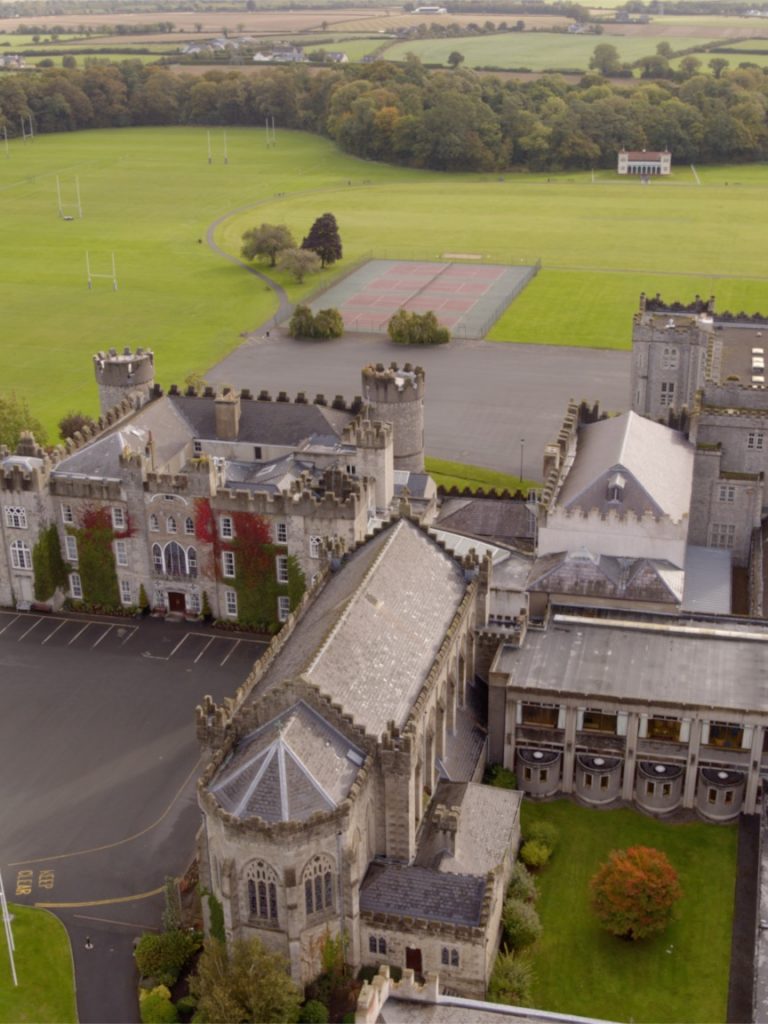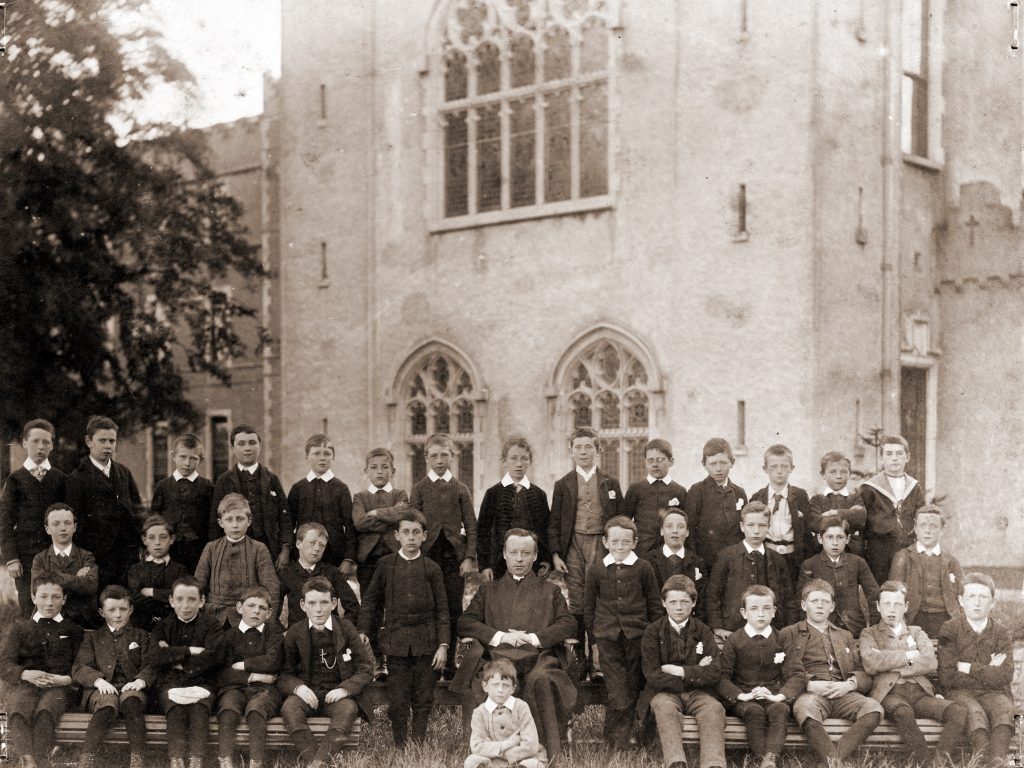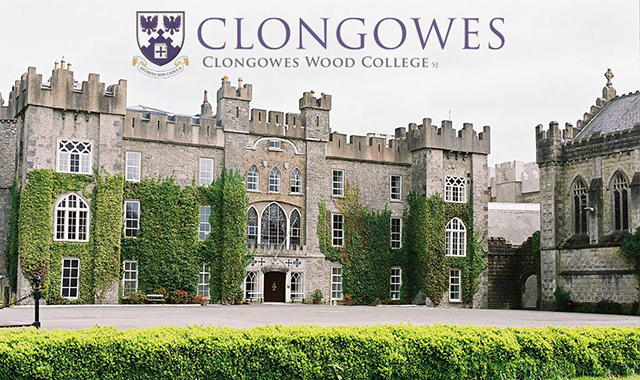To mark the 140th anniversary of the birth of James Joyce, Fr Bruce Bradley SJ shares an insight into life at Clongowes during Joyce’s time at the school:
James Joyce was a student at Clongowes Wood College near Clane, in Co. Kildare, for three years and a term, from the autumn of 1888 until just before Christmas in 1891. Founded by the Jesuits in 1814, Clongowes was the oldest Catholic lay school in Ireland and seen by many in the rising middle class, including his parents, as one of the best in the country. He was the eldest surviving child of what became a large, but increasingly beleaguered family. In 1888, thanks to his father’s inherited income, they were still somewhat prosperous and living in the salubrious Dublin seaside suburb of Bray. His father John Stanislaus had high hopes for his eldest son who, from early on, was showing signs of the promise that would in time blossom into genius.
Set around its medieval castle in several hundred acres of playing fields and woodlands, Clongowes was a big change from the Bray kindergarten of his earlier years. There were some 200 boys on the rolls, from many different parts of the country, and, at only six and a half when he arrived, James Joyce was almost certainly the youngest boy in the school. Unusually, for his first year, special accommodation was arranged for him in the infirmary, under the school nurse’s care, rather than in a dormitory with the other boys. Coming away from home to such an environment was a big step. The homesickness Joyce ascribes to Stephen Dedalus, his fictional counterpart in his semi-autobiographical novel, A Portrait of the Artist as a Young Man (1916), precursor of Ulysses, must have been a fair reflection of his own experience in at least the early months.
The school staff was composed exclusively of Jesuits, acting as administrators, teachers and ‘prefects’ (housemasters) and the routine, as in all such schools at the time, was semi-monastic and strict. But little Joyce was a good student and, as time passed, contemporaries remember him as a happy boy, well settled in the school, who took an increasing part in the life around him. He appeared in several plays and sang in the school choir. He was an altar-server and has Stephen in the Telemachus episode of Ulysses, remembering himself carrying ‘the boat of incense’ at benediction. He seems to have been attracted to cricket, as his use of terminology in the novels suggests, but was clearly unenthusiastic about the rough and tumble of ‘gravel football’, described in the early pages of A Portrait.
Despite his depiction of Stephen as blameless in every respect, James Joyce himself sometimes got into trouble in the ways that schoolboys do and the Punishment Book, which survives only in fragmentary form, contains his name three times for different infractions, one of them, memorably, for ‘vulgar language’. The occasion when he was given two strokes of the ‘pandybat’, or leather, by the prefect of studies, Fr ‘Dolan’, for ‘not writing’ in class, although the teacher had exempted him because his glasses were broken, would not have been recorded in the Punishment Book. But Joyce describes it at length in A Portrait and the imagery recurs in Stephen’s memory several times in Ulysses, including the bizarre phantasmagoria of the Circe episode. In A Portrait Fr ‘Dolan’ dismisses Stephen’s explanation as the fabrication of a ‘lazy little schemer. I see schemer in your face’, and punishes him in front of the others, an added humiliation, given his academic standing in the class.
The novel goes on to describe the dramatic aftermath when the smallest boy in the school, minus his broken glasses, dares to make his way into the mysterious recesses of the castle, where the Jesuits live, to complain to the highest authority in the school, the rector. Fr Conmee, who bears his real name and may in any case have been a family friend, receives him kindly, believes his story and promises to ensure he will not be punished again. In the playground afterwards, when the boys hear of this outcome, they ‘gave three groans’ for the prefect of studies who had punished Stephen unjustly, and ‘three cheers for Conmee and they said he was the decentest rector that was ever in Clongowes’.
Fr Conmee’s name occurs as many as 67 times in Ulysses and the tenor of these references is typically benign. Among other examples, in the Scylla and Charybdis episode Stephen will think of himself as ‘a child Conmee saved from pandies’. In the Wandering Rocks episode, where Fr Conmee, by then superior in the Jesuit church in Gardiner St, has a larger, symbolic role in the narrative, he is depicted at one point as imagining himself back in the college, walking in the grounds, ‘his thinsocked ankles… tickled by the stubble of Clongowes field. He walked there, reading in the evening and heard the cries of the boys’ lines at their play, young cries in the quiet evening. He was their rector: his reign was mild’.
According to A Portrait, when he arrived in Clongowes Stephen felt under social pressure to dignify his father’s profession as that of ‘a gentleman’, because his father ‘was not a magistrate like the other boys’ fathers’. In the Proteus episode of Ulysses he afflicts himself for other exaggerations of his family’s socio-economic status: ‘You told the Clongowes gentry you had an uncle a judge and an uncle a general in the army. Come out of them, Stephen. Beauty is not there’. His time in the school coincided with the disastrous decline in his father’s fortunes. For the first two years, John Stanislaus was being charged half-fees. In the third year, the full cost of some 21 guineas plus extras applied. The fee covering the first half of the 1891/92 academic year was never paid and James was withdrawn before Christmas 1891.
Joyce’s own feelings about this are reflected in a passage of A Portrait, where Stephen is depicted as writing the names of some of his Clongowes classmates in a moment of reverie the morning after the famous Christmas dinner scene in the novel. But he had transposed that scene from its real place in the chronology of his life. In the novel as we have it now, it seems to take place during his time in the school, to which he is due to return when the holidays are over. In reality, it happened just after he had left the school for the last time. The feelings of melancholy and nostalgia in the passage are revealing
As far as we know, he never returned and does not seem to have kept up links with his companions – not too surprisingly, perhaps, given the age at which they had encountered one another. There is, however, a moment in the Oxen of the Sun episode of Ulysses, set in the maternity hospital, when Stephen, by then a university student, falls into conversation with a fellow-student, who ‘was reminding Stephen of years before when they had been at school together in Conmee’s time’. There is one after-echo of significance, apart from the references in Ulysses noted above (and a very small number of shadowy allusions in his last novel, Finnegans Wake (1939). Two years before that novel appeared, the American writer Herbert Gorman came to Dublin to research his planned biography of the Irish writer. Joyce, by then living in Paris, wrote to his Dublin friend and university contemporary, C P Curran, to prepare the way, suggesting some places Curran might show Gorman. The short list is highly instructive: ‘Chapelizod’ (the ‘setting’ of Finnegans Wake), ‘Howth, if the rhododendrons are in bloom’ (an allusion to the final pages of Ulysses), ‘and Clongowes Wood’.
When Gorman returned to Paris and reported on his experiences to Joyce, the latter wrote again to Curran: ‘He said he had a great time in Eire but at Clongowes it seems the password was “O breathe not his name”’. He was, as the muffled echo of the moment in Finnegans Wake puts it, ‘Mr Unmentionable (O breed not his same!)’ The disappointment on the part of the man who was already then, and surely still remains, the most famous Old Clongownian in the world that he could not be spoken of at the door of his old school is palpable.
Fr Bruce Bradley SJ









